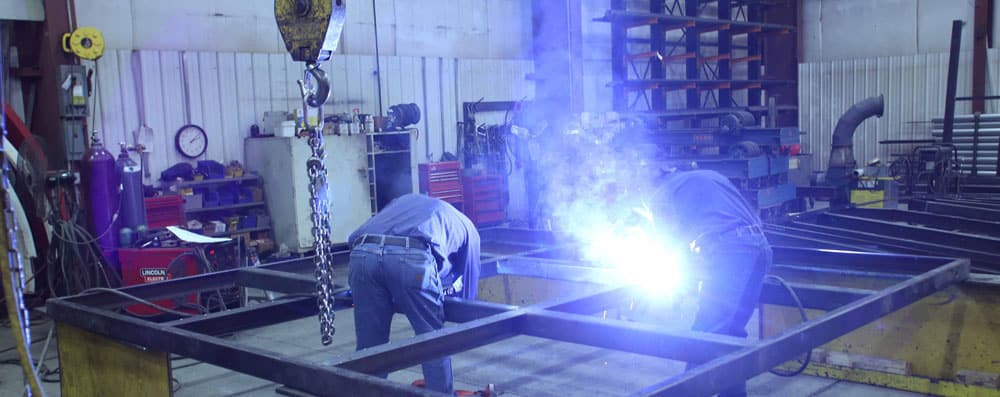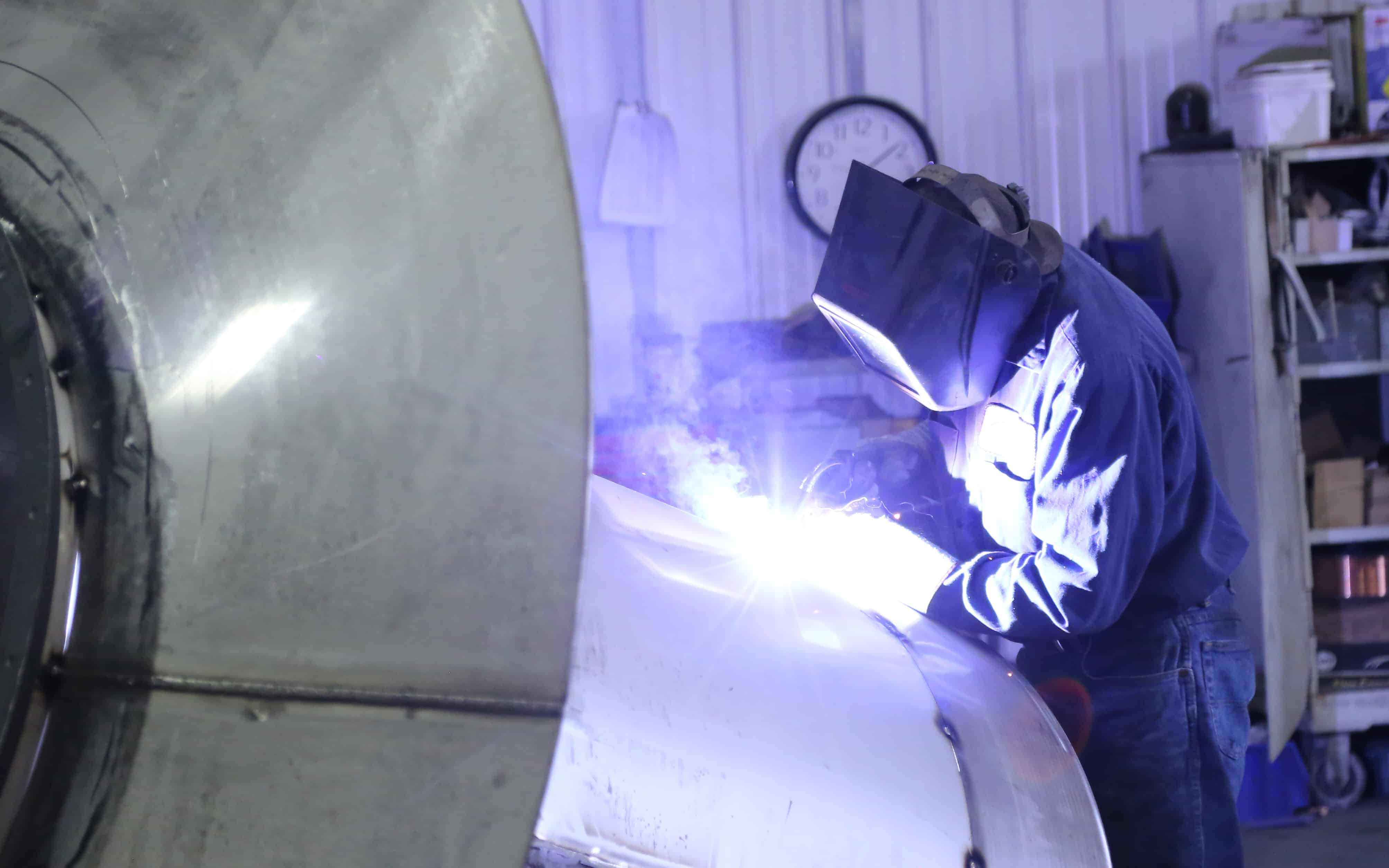Welding can be a dangerous job. Specifically, weld fumes contain a mixture of metals that can cause serious health damage. However, welders can work safely and stay healthy with an industrial ventilation system keeping the air clean.
What Are Some Health Risks for Welders?
Welders work very closely to the metal they are welding. So this puts them in the path of the weld fumes that rise from the heated metal. Many components of these fumes are dangerous to inhale. But industrial ventilation systems can remove these fumes.
Welders working on iron are at risk of pulmonary siderosis, sometimes known as “welder’s disease.” This is where iron particles build up in the lungs and damage them. This disease is incurable. Welding causes another disease known as “metal fume fever”. In this case, the lungs react to inhaling metals like nickel or other metals, causing a flu-like illness. Also, cadmium and hexavalent chromium are proven to cause cancer. Further, beryllium is often alloyed with other metals and causes fatal lung disease. Meanwhile, using manganese in welding rods or alloys causes a disease looking like Parkinson’s.
With all these health dangers, ventilation solutions are necessary for welders’ health. Fortunately, an industrial ventilation system will remove weld fumes and let welders work safely.

How Should a Plant Ventilation System be Designed?
An industrial ventilation system for welding can be either an ambient or source capture system. Both provide ventilation solutions, but in different ways.
An ambient system circulates all the air in the facility through a dust collector. Then it returns clean air. This removes weld fumes from the whole space.
A source capture system has ventilation points at the areas where the welders work. Examples of these points can be fume arms, hoods, or downdraft tables. The air pulls the fumes directly away from the welder’s breathing area. The plant ventilation system filters the air through a dust collector.
You can use both kinds of systems for industrial ventilation. Source capture works well when the dust comes from individual machines or work areas that don’t move around. Install a hood or arm to handle ventilation from those sources.
Applications can include fume extraction from robotic weld cells or welding stations. In other instances, they can include bin vents, blenders, and conveyors. Source capture can usually manage any process that generates dust.
Connect a hood, fume arm, or downdraft table to the general air ventilation system. Design the system with many “drops,” or source capture points. This requires a skillful system designer to balance the airflow. A badly designed system may not have consistent ventilation in all areas of the plant.
An ambient system works well for cleaning all the air in the facility. An industrial ventilation system like this might be used when people are creating fumes by welding in different areas or moving around. If source capture points can’t catch everything, an ambient strategy may be needed. This will ensure the plant ventilation system is sufficient.
Industrial Ventilation Systems for Welder Health
With so many ventilation solutions possible, you can protect welders in every type of facility from weld fume health hazards. Have your system designed by a trained pro will make sure every area of the facility has clean air.
If a hazard can’t be removed completely, OSHA and other safety groups like ACGIH recommend engineering controls. A plant ventilation system is a form of engineering control. Welders need to work around weld fumes. The best way to minimize the risk is to remove the fumes before they can cause harm.
Make sure welders in your facility stay healthy. Contact us about an industrial ventilation system designed for your needs.

